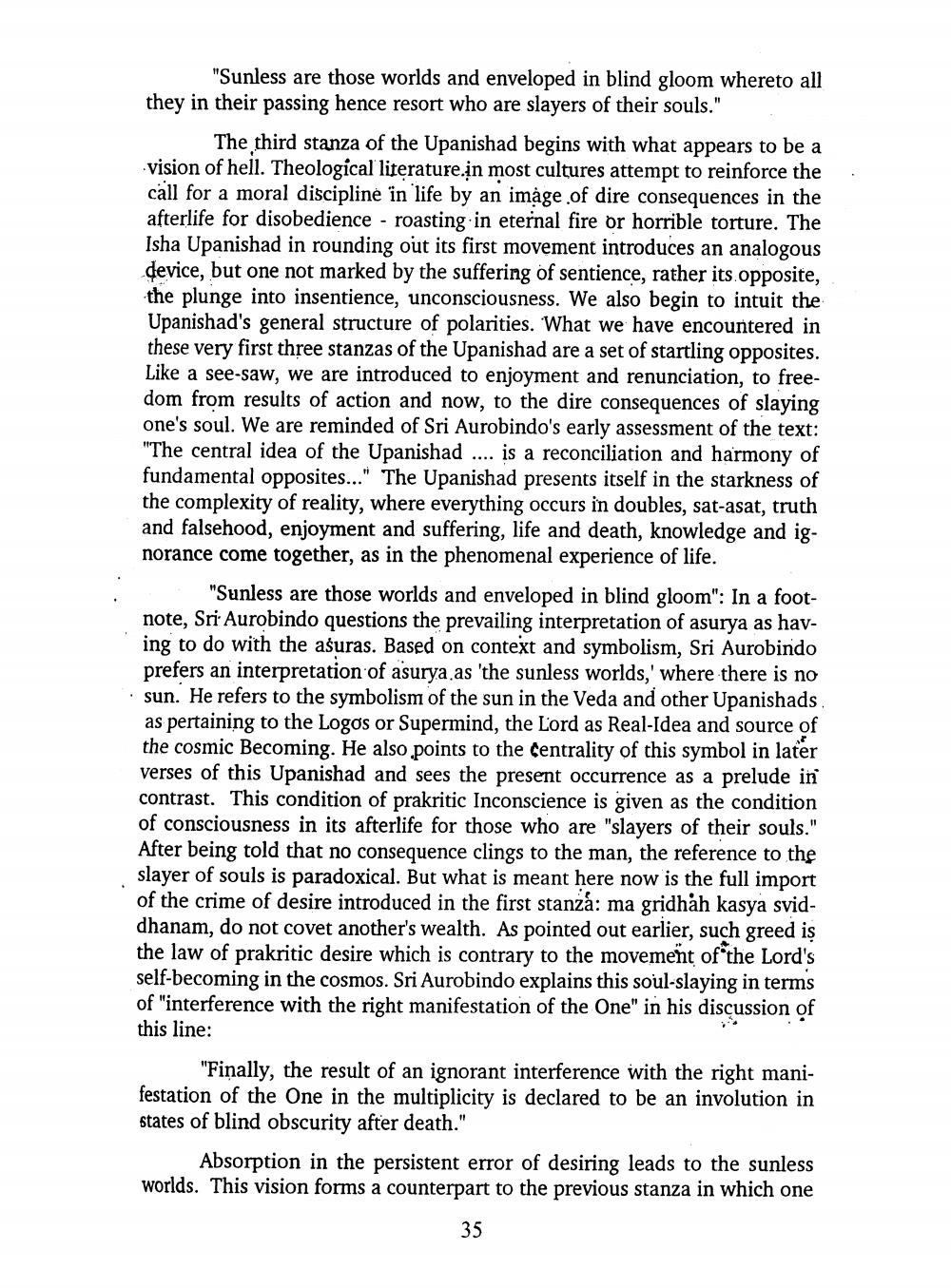________________
"Sunless are those worlds and enveloped in blind gloom whereto all they in their passing hence resort who are slayers of their souls."
The third stanza of the Upanishad begins with what appears to be a vision of hell. Theological literature in most cultures attempt to reinforce the call for a moral discipline in life by an image of dire consequences in the afterlife for disobedience - roasting in eternal fire or horrible torture. The Isha Upanishad in rounding out its first movement introduces an analogous device, but one not marked by the suffering of sentience, rather its opposite, the plunge into insentience, unconsciousness. We also begin to intuit the Upanishad's general structure of polarities. What we have encountered in these very first three stanzas of the Upanishad are a set of startling opposites. Like a see-saw, we are introduced to enjoyment and renunciation, to freedom from results of action and now, to the dire consequences of slaying one's soul. We are reminded of Sri Aurobindo's early assessment of the text: "The central idea of the Upanishad .... is a reconciliation and harmony of fundamental opposites..." The Upanishad presents itself in the starkness of the complexity of reality, where everything occurs in doubles, sat-asat, truth and falsehood, enjoyment and suffering, life and death, knowledge and ignorance come together, as in the phenomenal experience of life.
"Sunless are those worlds and enveloped in blind gloom": In a footnote, Sri Aurobindo questions the prevailing interpretation of asurya as having to do with the asuras. Based on context and symbolism, Sri Aurobindo prefers an interpretation of asurya as 'the sunless worlds,' where there is no · sun. He refers to the symbolism of the sun in the Veda and other Upanishads
as pertaining to the Logos or Supermind, the Lord as Real-Idea and source of the cosmic Becoming. He also points to the centrality of this symbol in later verses of this Upanishad and sees the present occurrence as a prelude in contrast. This condition of prakritic Inconscience is given as the condition of consciousness in its afterlife for those who are "slayers of their souls." After being told that no consequence clings to the man, the reference to the slayer of souls is paradoxical. But what is meant here now is the full import of the crime of desire introduced in the first stanza: ma gridhah kasya sviddhanam, do not covet another's wealth. As pointed out earlier, such greed is the law of prakritic desire which is contrary to the movement of the Lord's self-becoming in the cosmos. Sri Aurobindo explains this soul-slaying in terms of "interference with the right manifestation of the One" in his discussion of this line:
"Finally, the result of an ignorant interference with the right manifestation of the One in the multiplicity is declared to be an involution in states of blind obscurity after death."
Absorption in the persistent error of desiring leads to the sunless worlds. This vision forms a counterpart to the previous stanza in which one
35




